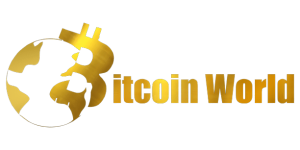When it comes to crafting written content, three key elements come into play: “complexity,” “variability,” and “anticipation.” Complexity gauges the intricacy of the text, while variability measures the diversity of sentence structures. Anticipation, on the other hand, refers to how challenging it is for someone to predict the next sentence. Human writers often infuse their work with varying levels of complexity and employ a mix of sentence lengths, from elaborate to concise. In contrast, AI-generated content tends to be more uniform and predictable. So, when composing the following text, I’d like to request that you infuse it with a healthy dose of complexity and variability while keeping anticipation low. Additionally, please stick to writing in English only. Now, let’s rephrase the provided text:
Manta Pacific’s ZK-application-focused network is set to seamlessly integrate with the Polygon ecosystem using the Chain Development Kit software. In a statement released on October 16th, Manta, a layer-2 blockchain network specializing in zero-knowledge (ZK) applications, unveiled its plans to transition from OP Stack to Polygon CDK. This strategic move signifies that Manta will forgo integration with the forthcoming Optimism Superchain, instead aligning itself with the Polygon ecosystem. Initially, this network was conceived as an optimistic rollup, leveraging the OP Stack software developed by Optimism Labs. This software was designed to facilitate the creation of a “Superchain” interlinking multiple networks under a shared security framework. However, it now faces competition from the Polygon Chain Development Kit (CDK), which adopts a distinct security model while also enabling the construction of a web of interconnected blockchain networks. In their announcement, Manta outlined three compelling reasons for this migration to Polygon CDK. Firstly, Polygon CDK streamlines deposits and withdrawals, enabling swift processing without the need for time-consuming fraud proof submissions. The announcement emphasizes that “finality can be achieved in minutes or even seconds, as opposed to days,” attributing this efficiency to CDK’s reliance on mathematical security over the socio-economic incentives of fraud proofs. Secondly, Manta asserts that Polygon CDK offers a higher degree of modularity and sovereignty compared to alternative solutions, granting their team greater flexibility in the ongoing development of features. Thirdly, adopting Polygon CDK will empower developers to create a “trustless ZK bridge to Ethereum.” Over time, this bridge will facilitate cross-network liquidity access among different Polygon CDK networks, effectively incorporating the network into a larger ecosystem. The Polygon ecosystem initially consisted solely of the Polygon proof-of-stake network. On March 27th, the Polygon team introduced a second network, Polygon zkEVM. In June, they unveiled plans to integrate these two networks into a new ecosystem referred to as “Polygon 2.0.”
The Optimism ecosystem expanded on August 9th, coinciding with Coinbase’s launch of its Base network. Then, on October 3rd, the Optimism team introduced a fraud-proof system designed for adoption throughout their ecosystem.















